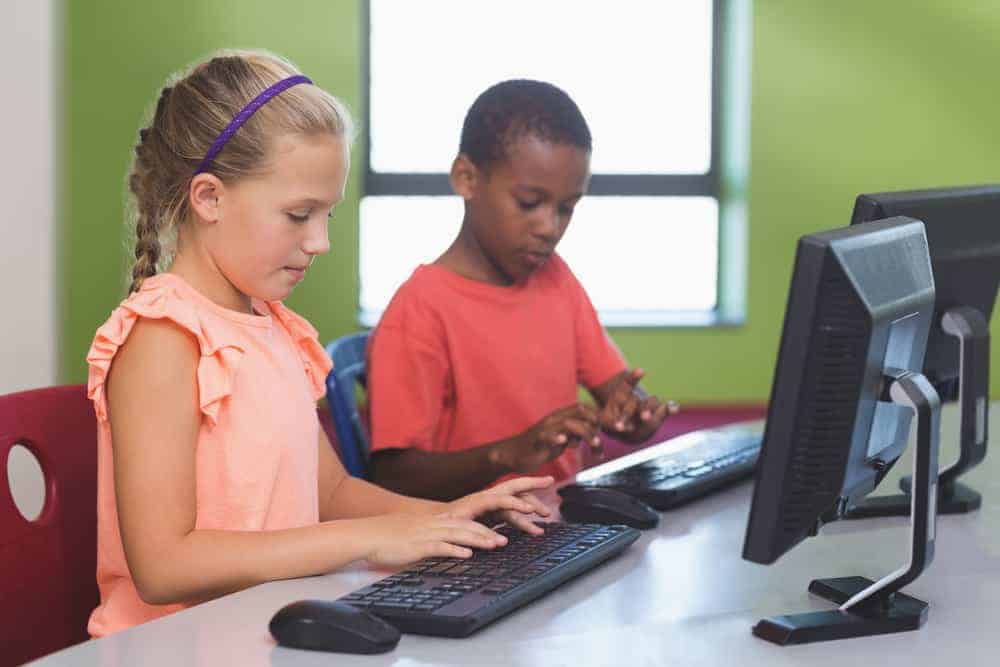Today, there is hardly a pediatrician, developmental specialist, or psychologist out there advocating for more screen time for kids. Most of them are calling for parents to severely limit their children’s screen time or even abandon screens altogether for young children. As Dr. Victoria Dunckley, integrative psychiatrist, writes: “Children’s brains are much more sensitive to electronics use than most of us realize. In fact, contrary to popular belief, it doesn’t take much electronic stimulation to throw a sensitive and still-developing brain off track.”
As a parent, this makes a lot of sense to me. I worry about the amount of time my kids spend on screens. From talking to other parents, I know I’m not the only one. When I read the list of negative effects — obesity, diabetes, sleep disturbances, bullying, behavior problems, academic problems, vision problems, structural changes in their brains, and more — I’m compelled to act on the advice of professionals and limit screen time for my kids. We’ve come up with a plan that works for our family and have seen positive changes in our children’s behavior.
Raising kids in a world full of smart phones, iPads, Chrome books, YouTube, Netflix, and the like is a new phenomenon. As a society, we haven’t successfully raised a generation of kids on all of these screens. The iPad only came out in 2010 after all. That’s one year before my third grader was born. My third grader, who is now supposed to have his reading ability assessed on an iPad at school.
Under North Carolina’s Read To Achieve legislation, kindergarten through third graders must have their reading assessed each school year. In case you haven’t heard, and I’ll spare you the legal details, there’s been an ongoing battle over what tool is used to assess our youngest students’ reading ability in North Carolina. Currently, things are still in legal limbo. Yet, Mark Johnson, state superintendent, says, “Istation,” a screen-based tool, “is the best reading diagnostic tool for North Carolina educators, students and parents.” Under his leadership, Istation has been pushed into many schools across the state.
Wait. Come again, Superintendent Johnson? Developmental specialists say to limit screen time, and the best you can find for our children is a screen? What about, you know, teachers and books?
I’ve been following the legal mess on this topic closely over the past few months. As a parent, I want my sons to grow and develop as readers. I want to do what’s best for them developmentally, too. Our state legislators seem to agree. Under Read to Achieve, assessments must be done “using developmentally appropriate practices.”
If experts and studies from the World Health Organization to my local pediatrician are cautioning against screens for kids, why are we having this conversation about using screens in the classroom for young children?
A screen-based tool shouldn’t even be considered based upon scientific research and in compliance with Read to Achieve law.
You may have seen the recent study published in JAMA Pediatrics showing that 5-year-olds, the average age of a kindergartner and the age of my youngest son, “who have more screen time have lower structural integrity of white matter tracts in parts of the brain that support language and other emergent literacy skills.”
Whoa.
Screen time leads to negative structural changes in kids’ brains? A screen-based assessment tool does not sound like a developmentally appropriate tool to me in any way, shape, or form.
A study in Japan of over 2,000 kindergarten through middle school students showed that as little as 30 minutes of computer use or gaming can cause disturbed sleep and daytime fatigue. By contrast, it takes two hours of TV viewing to show the same results. It’s important to note that 30 minutes is the approximate length of time for the screen-based assessment Johnson is championing.
Sleep is vital for kids. Again, using screens in the classroom isn’t developmentally appropriate.
I’ve asked for a paper and pencil version of the assessment. There is not one. I’ve even revoked consent to give my children’s information to technology companies, especially those who contract with third party vendors. Other parents need to be refusing the use of screen-based assessment tools and testing as well.
Ultimately, legislation needs to be passed to protect our children from overuse of screens in the classroom, a practice that’s been gaining ground over the past few years thanks to the sales force of education technology companies. I’m not willing to gamble with my children’s brains while I wait for such legislation. My kids’ brains are developing now.
We need more adults to speak up for our kids. Talk to your teachers first. Ask them how much, when, and why they use screens in the classroom and ask them to work with you on what’s developmentally necessary based upon the age of your children. Then, call and email your local school board members and your state representatives. Tell them you are concerned about the damaging effects of screen time on children and you want limits placed on screen time at school.
Almost every toy this Christmas season will come with a recommendation along the lines of “For ages 8 and up” or “Not suitable for children under 3. Small parts.” Tablets, cell phones and computers don’t come with such warnings because they are devices made for adults. Maybe these warnings are just what we all need this season and beyond. Our kids depend upon us to keep them safe after all — from the tips of their toes to the white matter in their brains.





